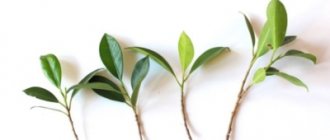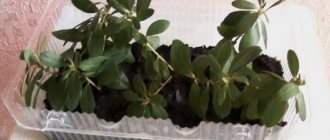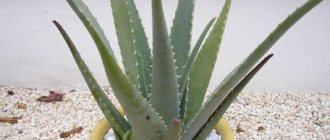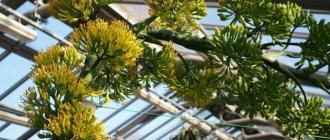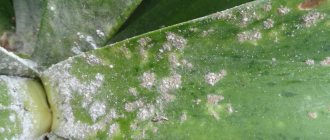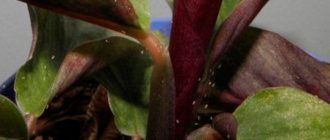Azalea: description, photo
Azalea is called “rose tree”, “alpine rose”, “rose bush”. This is due to external characteristics. From a distance or in photographs, dwarf bushes are often mistaken for thickets of wild roses. The flower stems are covered with light gray bark, which may be partially lignified. The bush grows up to 1.5 m, but as a houseplant it stretches up to 50 or 60 cm. The leaves can take a semi-oval or oval shape, grow up to 3 cm, be light or dark green, and slight fluff can be noticeable on the underside of the leaf blades.
The type of flowers depends on the varietal characteristics: small flowers grow up to 2 cm, large ones up to 5-6 cm. As a rule, they are collected in complex inflorescences that begin to appear at the base of the leaf. The shade of the petals can be very different, ranging from monochromatic, evenly covered, to multi-colored with different shades.
The appearance of azaleas is associated with the regions of India and China. There, in areas of the foothills, flowers were discovered and described by scientists. The genus of these alpine roses received its own name, azalea, but over time it was disbanded, and they began to be classified as rhododendron.
The species began to develop and became widespread. More than 10 thousand varieties were created through selection. Now rhododendrons decorate residential buildings around the world. Caring for azaleas at home is simple, but the rules may differ significantly from the requirements of other flower crops. Indoor flowers are represented by two types, which number thousands of varieties.
| Indian or Sims rhododendron | Japanese view |
| A low bush, stretches up to 70 cm, the branches are densely located on both sides of the stem. The bottom plates may appear several shades lighter than the top plates. Indian azaleas have buds that grow one at a time and can grow up to 8 cm in diameter. Shades of petals can be pink, burgundy, cream. This variety has a particularly long flowering period. | Azaleas of these varieties are pruned for bonsai-type cultivation. A cap of small flowers on a bare stem often becomes the center of flower arrangements. Hybrids stretch up to 1 m; regular pinching is recommended for them. |
The flowering of the azalea (rhododendron) in winter has made it popular since the 19th century. In modern Europe, pots with them still remain a symbol of the Christmas table; they are presented at housewarming parties as a wish for a long and happy life.
Azalea flowering at home
Features of the culture are the duration and timing of flowering. It occurs depending on the variety and lasts 2-3 months if you properly care for the plant. In addition, under certain conditions, re-blooming occurs. The flowering of indoor azaleas of early varieties lasts from November to January. Late varieties bloom in January-February. If no maintenance conditions were violated, then the indoor azalea will bloom for 2 to 3 months. For abundant flowering, certain rules are followed.
Placement
Alpine roses love light; it should reach the leaves for 10 hours. Flower growers place pots on windows on the southeast side. In addition, the possibility of shading is taken into account so that direct sunlight does not fall on the platinum sheets and does not burn them. In order for buds to form on the stems, the azalea is additionally illuminated using artificial light.
azalea flowering at home
Watering
This is a special care point. Flower growers recommend monitoring the balance of soil moisture. It should be moistened, but not soggy. The soil is watered as the top layer dries. Excessive watering and stagnation of water on the tray lead to damage to the root system - the plant loses its ability to absorb moisture and becomes defenseless to fungal diseases.
Air temperature
Azalea is a crop that begins to bloom when the air temperature drops. To stimulate bud setting, the pot is taken to a place where the thermometer remains at + 15 to + 17°. Some varieties begin to bloom at + 10°. When the plant has gained color, it will be comfortable at + 23°.
Soil characteristics
This crop blooms in acidic soil. Experienced gardeners use heather soil for planting. This is a layer of earth, the upper part of which is at the stage of natural decay. Heather soil is collected in areas where heather bushes grow. The acidity level of such soil is in the range from 4 to 4.5 pH.
Capacity
Pots with a narrow base and a wide top are suitable for azaleas. This is due to the structural features. The roots do not grow deep, they need more space at the base, and the bottom of the planting pot must be well drained.
Fertilizer application
Botanists have developed a special feeding scheme. The soil is fed twice during the entire flowering period of the azalea. During the summer, fertilizer is applied once every 2 weeks.
When should you worry?
Azalea is a rather whimsical plant , so the lack of flowering most likely indicates that the conditions are not suitable for it. If we are talking about an indoor flower, then it is worth moving it to a more suitable place, monitoring proper and timely watering, as well as the air temperature.
If your garden azalea does not bloom, then you should think about feeding. However, do not forget that such a flower blooms no earlier than 3-4 years after planting.
Thus, the lack of flowering is associated with such errors as:
- The flower is located in a too dark place or, conversely, in the open sun.
- The room is very hot.
- Lack of nutrients in the soil.
- There is no trimming or pinching.
Any flower has its own characteristics of maintenance, and in order for it to please with its lush flowering, you need to carefully familiarize yourself with the conditions of its maintenance. Azalea is a rather capricious plant that is not suitable for a beginner who is not at all familiar with the rules of caring for flowers.
How many times a year does azalea bloom?
Azalea is an indoor flower that is characterized by slow development during the first years of its existence. Many inexperienced gardeners mistake this feature for a manifestation of illness or dissatisfaction with care. They begin to rearrange the pot, treat the stems with different chemicals, or even try replanting. This is unnecessary trouble. The alpine rose takes a long time to get used to the new environment and begins to bloom only after 2-4 years of existence.
A houseplant can be seen blooming twice if it is planted in open ground areas in the summer. In this case, it is necessary to carefully select a place for planting and prepare special acidic soil.
Information! After planting in open ground, the azalea is cared for in the same way as a houseplant. In autumn they are transplanted into a pot.
When should I expect the first bud after buying a potted plant in a store?
There is no need to be upset if, after purchasing, the azalea stops blooming magnificently. This is an absolutely normal phenomenon, because the flower needs to go through a period of adaptation and adapt to new conditions.
With proper care and comfortable conditions, the plant will begin to bloom in due time. Unfortunately, not everyone knows that this flower does not like heat and should not be placed on a windowsill under which there is a radiator.
This plant prefers coolness, and temperatures from +10 to +15 are more acceptable for it. Therefore, it would be best to place the flower on a loggia or balcony.
Attention ! When choosing an azalea in a store, you need to pay attention to the condition of the buds and the soil in which it is contained.
If you bought a flower in a store that faded very quickly, then new flowering will begin no earlier than in 8-10 months. If the flower has not yet bloomed, it will definitely begin to bloom at the end of autumn or winter (this circumstance depends on the variety).
Azalea acclimatization is considered complete after it blooms for the first time. During this time, you need to pay special attention to watering, fertilizing, and suitable humidity conditions.
How to make azaleas bloom longer
Collectors of this variety have long and successfully stimulated the setting of buds. When they talk about the appearance of flowers over 2 months, they mean the gradual death of some inflorescences or buds and the systematic formation of new ones. If you make no attempts to prolong the process, it will last up to 2 weeks. With constant monitoring of the process, budding will only end in 2 months.
After flowering, each bud is carefully removed, this allows the plant to concentrate its energy on the formation of the next bud. Proper pruning is also necessary for abundant flowering. It is carried out at the resting stage, when the main part has faded.
Crown formation
Azalea in a pot
At the end of summer, buds begin to form. In order for azalea to bloom efficiently and abundantly, it is necessary to prune the plant in time, thereby creating new tops. There are a couple of crown types:
Tree view
In the form of a bush.
For a crown in the form of a tree, you need to select the most powerful azalea branch and grow the trunk, cutting off the remaining shoots. For even growth, the trunk should be tied up. When the azalea has grown to the desired size, pinch out the top. Next, trim the side shoots as they grow.
To form a bush, it is enough to pinch the cutting; the distance from the ground should be about 15 centimeters. Side shoots and branches are also pinched and turned to create an even bush.
Azalea after flowering care
Late varieties stop setting buds by April, early varieties enter the resting stage in January or February. After flowering, a crucial period of care begins; it plays a key role in the further development of the flower.
How to prune after flowering
Pruning rhododendrons is one of the most important principles of care. A plant that is not pruned at the right time will not be able to adapt to the summer season and form flower buds for the next flowering. Pruning is a solution to several problems at the same time:
- An adult bush is forming.
- Further flowering is stimulated.
- There is a growth of new shoots and renewal.
Pruning is carried out with sharp garden pruners, trying to cut at an acute angle. The following are subject to removal:
- old, damaged branches;
- non-viable shoots;
- dead inflorescences;
- dried parts.
Pruning is different from pinching, which is done on an ongoing basis. By pinching in summer, the skeleton of the bush is formed, preventing its all-round growth. Pinch out the top shoots, side shoots, and axillary leaves.
Replanting after flowering
Young rhododendrons are replanted every year. Mature bushes change their place of growth every 2-3 years. Planned replanting is carried out after complete flowering. Replanting may be necessary if the soil is partially changed, the root system begins to rot, or the aerial parts become diseased. Reproduction is also associated with transplants. Dividing a bush is a method of breeding while preserving varietal characteristics. The mother plant is dug up, divided and planted separately.
Flowering plants are replanted only as a last resort; planned replanting requires preparation. After the buds die, pruning is carried out, removing dead parts, then containers and soil mixtures are prepared. Pots are selected taking into account the changes; the selected container should be 2-3 cm larger than the previous one. The soil is shed in advance with a manganese solution; this method helps to avoid infection with fungal diseases after transplantation, when the rhododendron is too weak to resist on its own.
The transplant is carried out in the evening. Throughout the day, the pot is placed in a large container with water diluted with root biostimulants. Thanks to the pot's drainage system, the soil becomes soggy. After this, the roots are taken out along with a lump of earth and immediately transferred to the bottom of the prepared hole. The roots are not straightened or cut off unnecessarily. Pruning and disinfection are carried out only when the rhododendron is sick. For healthy home flowers, the method of transshipment is suitable, that is, replanting along with a lump of earth.
A hole is a small hole with a distance of no more than 1 cm from the drainage layer. After transferring, the voids are filled with prepared soil, the surface is patted down, watered and the azalea is removed for adaptation on a shaded windowsill.
Azalea's dormant period
Dormancy for an indoor flower occurs after transplantation; it lasts from May-June to November-December. Typically, flower crops are left untouched throughout the sleep phase, but this does not apply to rhododendrons. The rest period is used to apply regular fertilizing. Mineral complexes with a high content of phosphorus, nitrogen and potassium are suitable for this. Fertilizing is applied at the root weekly.
Special complexes that are created for this species are used at different stages of development:
- Before flowering, Zircon is added. It stimulates budding and development of the root system.
- Foliar feeding is carried out with Epin solution. It cannot be used during active growth or budding.
- With active development and establishment of shoots earlier than planned, Ferovit is applied. This remedy is rich in iron and can stop the start of exiting the resting phase too early.
Warning! When dissolving special complexes, carefully monitor the concentration. An excess of base substance can burn the roots.
Growing problems
Often, when keeping flowering indoor plants, processes occur that indicate a violation of the rules of care or the progression of diseases.
What to do if an azalea drops its leaves
Partial or complete shedding of leaf blades by rhododendrons signals problems. Based on the accompanying symptoms, the main causes of the phenomenon can be identified:
- Brown spots form on the leaf blades, the buds dry out, and the rhododendron sheds its leaves - this is a consequence of possible rotting of the roots and excessive dampness of the soil.
- A complete reset is evidence of lack of space, changes in soil composition, and lack of nutrients.
- Brown spots and dry areas appear on the tips of the leaf blades - this indicates a violation of watering requirements, indicates the flower is drying out or watering with cold, hard water.
- Leaves dry out and fall off - this is a sign that the air around the azalea is too dry.
Once the root cause is determined, appropriate measures are taken. If the azalea has dropped its leaves due to overwatering, then it is dried. One of the methods is to pull out the flower, dry the roots on a dry piece of cloth and add fresh dry soil. You can transplant the azalea into a new container or leave the old one.
If the alpine rose is partially dry, create conditions for moisture. To do this, they constantly spray the air near the flower, place containers filled with water around the perimeter of the window sill, and reduce the heating of the room. It is recommended to change the water used to water the soil to rainwater or to water the soil with melted snow. If after changing the water the shedding of leaves slows down, then the cause of the phenomenon is excessive hardness. Care continues with settled water.
Advice! To soften tap water, add citric acid or lemon juice.
Causes of yellowing leaves
Yellowing of leaves is one of the signs of the development of possible diseases:
- Chlorosis. This is damage to the root system due to an excess of potassium. It begins with a gradual yellowing of the leaf blades, accompanied by a loss of elasticity of the main and lateral stems. To reduce the indicators, the soil is carefully acidified.
- The appearance of pests. Scale insects can cause yellow areas to appear on leaf blades. They stick to the lower part of the leaves, cover parts of the plant with a sticky secretion and systematically destroy the stems. They can be removed by treating with soapy water or special chemicals.
Causes of blackening of leaves
Darkening of areas and gradual death may indicate various external influences.
The appearance of black thrips. This is a small pest that cannot be noticed immediately. It lives on the lower part, and blackening forms in places where it accumulates. In order to get rid of it, the plant is treated with a solution of copper sulfate. This method may result in reduced growth rates, but will get rid of the parasite.
Fusarium. A fungal disease that can only be cured at an early stage. It is characterized by blackening of the stem and leaves. The plant is treated with a solution of Fundazol. The plant, blackened to the top, is destroyed.
Rhododendron mite. An insect that can destroy a crop. Black spots cover all parts of the flower. The insect is dangerous because it quickly lays eggs. It is destroyed by stage-by-stage chemical treatments.
Flower pests
If a plant grows in a dry and warm environment, then spider mites often appear on it. Azalea leaves
may become brown in color, and later they begin to fall off.
You can see cobwebs on the back of the leaves. To get rid of it, the plant is usually sprayed with a soap and water solution. Insecticidal preparations are very effective.
A typical pest for this plant is the azalea moth, which especially affects garden azalea
.
Its leaves begin to dry and fall off, and the caterpillars move to untouched areas of the Azalea
, continuing to completely destroy the flower, rolling its leaves into tubes.
The strawberry mite poses no less danger to the plant, from which it slows down its growth and subsequently dies. The main symptom characteristic of this pest is leaves twisted into boats and the appearance of many leaves instead of one.
Chemicals that can always be purchased at any flower shop will save you from these pests.
